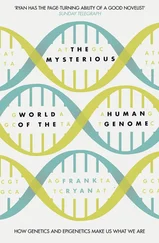Gary Marcus - Kluge - The Haphazard Construction of the Human Mind (Houghton Mifflin; 2008)
Здесь есть возможность читать онлайн «Gary Marcus - Kluge - The Haphazard Construction of the Human Mind (Houghton Mifflin; 2008)» весь текст электронной книги совершенно бесплатно (целиком полную версию без сокращений). В некоторых случаях можно слушать аудио, скачать через торрент в формате fb2 и присутствует краткое содержание. Жанр: Старинная литература, на английском языке. Описание произведения, (предисловие) а так же отзывы посетителей доступны на портале библиотеки ЛибКат.
- Название:Kluge: The Haphazard Construction of the Human Mind (Houghton Mifflin; 2008)
- Автор:
- Жанр:
- Год:неизвестен
- ISBN:нет данных
- Рейтинг книги:3 / 5. Голосов: 1
-
Избранное:Добавить в избранное
- Отзывы:
-
Ваша оценка:
- 60
- 1
- 2
- 3
- 4
- 5
Kluge: The Haphazard Construction of the Human Mind (Houghton Mifflin; 2008): краткое содержание, описание и аннотация
Предлагаем к чтению аннотацию, описание, краткое содержание или предисловие (зависит от того, что написал сам автор книги «Kluge: The Haphazard Construction of the Human Mind (Houghton Mifflin; 2008)»). Если вы не нашли необходимую информацию о книге — напишите в комментариях, мы постараемся отыскать её.
Kluge: The Haphazard Construction of the Human Mind (Houghton Mifflin; 2008) — читать онлайн бесплатно полную книгу (весь текст) целиком
Ниже представлен текст книги, разбитый по страницам. Система сохранения места последней прочитанной страницы, позволяет с удобством читать онлайн бесплатно книгу «Kluge: The Haphazard Construction of the Human Mind (Houghton Mifflin; 2008)», без необходимости каждый раз заново искать на чём Вы остановились. Поставьте закладку, и сможете в любой момент перейти на страницу, на которой закончили чтение.
Интервал:
Закладка:
eyes of animals and the carbon cycle of plants; these include Don Harlow, Lawrence Getzler, Tyler Volk, Todd Gureckis, Mike Landy, and Dan Nilsson; my apologies to those I've failed to thank. I have only my memory to blame.
Christy Fletcher and Don Lamm are the dynamic duo who helped sell this book and connect me with Amanda Cook and Neil Belton; they've been supportive, energetic, and involved, everything an agent (or pair of agents) should be.
Finally, I'd like to thank my family — especially Athena, Mom, Dad, Linda, Julie, Peg, Esther, Ted, and Ben, and my in-laws Nick, Vickie, and the Georges — for their enthusiasm and unstinting support. Writing can be hard work, but with so many talented and loving people behind me, it's always a pleasure.
NOTES
l. REMNANTS OF HISTORY
2 The average person can't keep a list of words straight for a half an
hour: Tulving 8c Craik, 2000. 5 One scientist: Wesson, 1991. 7 "Human cognition approaches an optimal level of performance":
Chater et al., 2006. Superlatively well engineered functional designs: Tooby 8c Cosmides, 1995.
In principle possibility of "inept evolution": Tooby & Cosmides, 1995.
8 The Selfish Gene: Dawkins, 1976. Infanticide: Daly 8c Wilson, 1988. Male overperception of female sexual intent: Haselton 8c Buss, 2000.
9 Evolution as mountain climbing: Dawkins, 1996.
10 Bar-headed goose: Fedde et al., 1989. No guarantee that evolution will ever reach the highest peak: Dawkins, 1982.
11 The inefficiency of the gaps across which neurons communicate: Montague, 2006. 12 New genes in concert with old genes: Marcus, 2004. Evolution like a tinkerer: lacob, 1975.
13 Hindbrain evolution: Rosa-Molinar et al, 2005. Midbrain evolution: Takahashi, 2005. Language and the brain: Gebhart et al, 2002; Demonet et al, 2005.
14 "Progressive overlay of technologies": Allman, 1999.
i8o Notes to Pages 14-43
Chimpanzee overlap: The Chimpanzee Sequencing and Analysis Con
sortium 2005; King & Wilson, 1975.
15 How Doctors Think: Groopman, 2007.
The March of Folly: Tuchman, 1984.
16 Underestimating Mother Nature: Dennett, 1995.
2. MEMORY
18 Teenagers and World War I: Kelly, 2001.
19 Time spent looking for lost items: Tyre, 2004. Skydivers who forgot to pull the ripcord: http://temagami.carleton.ca/
jmc/cnews/i8ii2005/n6.shtml.
22 Remembering the frequent, the recent, and the relevant: Anderson,
1990.
24 Study underwater, test underwater: Godden & Baddeley, 1975.
25 Walking more slowly to the elevator: Bargh et al., 1996.
Soccer hooligans: Dijksterhuis & van Knippenberg, 1998.
Minority groups, priming, and testing: Steele & Aronson, 1995.
The automatic nature of stereotype priming: Greenwald et al., 1998.
26 Random dot patterns: Posner & Keefe, 1968.
27 9/11 memories: Talarico & Rubin, 2003.
28 Faulty eyewitness testimony: Schacter, 2001.
30 Memory and lability: Debiec et al., 2006.
33 Reconstructive memory for events: Loftus, 2003.
Mere exposure and confusions about fame: Jacoby et al, 1989. 34 How an actor's memory works: Noice & Noice, 2006. 35 Photographic memory: http://www.slate.com/id/2140685/.
36 Pinker, quoted on book jacket of Schacter, 2001. 37 Fractured memory and preparing for the future: Schacter & Addis, 2007.
3. BELIEF
40 Gullibility: Forer, 1949.
42 Snowball study: Dion, 1972.
Beauty studies: Etcoff, 1999.
Candidates that look more competent: Todorov et al., 2005.
43 Would you like carrots with that? (food in McDonald's wrap): Robinson et al., 2007.
44 Impressions of Donald: Higgins et al, 1977. The focusing illusion and dating: Strack, Martin, & Schwarz, 1988.
46 Dishes and perceived contribution: Leary 8c Forsyth, 1987; Ross 8c Sicoly, 1979. Wheel of fortune: Tversky 8c Kahneman, 1974. Attila the Hun: Russo 8c Schoemaker, 1989.
47 Limit 12 per customer: Wansink et al., 1998.
48 Lips: Strack, Martin, 8c Stepper, 1988. Arm flexion: Fפrster 8c Strack, 1998. Chinese characters: Zajonc, 1968. Name letter effect: Nuttin, 1987. Mere exposure and paintings: lames Cutting, personal communication, based on informal classroom research.
50 Thinking about death: Solomon et al., 2004. Minority groups during crisis: Jost 8c Hunyadi, 2003.
53 The difficulty in repressing automatic thoughts: Wegner, 1994; Macrae et al., 1994. Sequences: Wason, i960.
54 Another study: Darley 8c Gross, 1983.
55 Trivia game: Dijksterhuis 8c van Knippenberg, 1998.
56 Love the one you'll be with: Berscheid et al., 1976.
Motivated reasoning: Kunda, 1990. 57 Cigarettes and rationalization: Kassarjian 8c Cohen, 1965. Critiques of studies that challenge our prior beliefs: Lord et al, 1979.
58 Bush: "I trust God speaks through me. Without that, I couldn't do my job." luly 9,2004, Lancaster, PA: http://www.freerepublic.com/focus/f
news/1172948/posts. Voting preferences and belief in God: Pew Research Center, 2007. Belief in a just world: Lerner, 1980.
61 Trouble telling sound arguments from fallacies: Stanovich, 2003. 62 Confusing logic with prior beliefs: Klauer et al., 2000; Oakhill et al., 1989. 63 Neural basis of syllogism: Goel, 2003; Goel 8c Dolan, 2003.
Understanding of syllogisms in other cultures: Luria, 1971. 64 Author's study on belief: Marcus, 1989. 66 Interruption and gullibility: Gilbert et al., 1990.
Time pressure and cognitive strain increase the chance of believing falsehoods: Gilbert et al., 1993. This American Life: April 13, 2007: http://www.thislife.org/Radio_
Episode.aspx?sched=n83).
i82 Notes to Pages66-97
Two-month investigation: http://www.nhpr.org/node/12381.
67 Ask and ye shall believe: Pandelaere 8c Dewitte, 2006.
4. CHOICE
69 Kids and marshmallows test: Mischel et al, 1989. 70 $100 now or $300 in three years: Ainslie, 2001.
Day 89 of 90: Butler et al, 1995. 73 Almost everyone takes the sure thing: Allais, 1953. 74 Drive across town: Tversky & Kahneman, 1981. 77 Retirement: http://archives2.sifma.org/research/pdfyRsrchRprtV0l7-7.pdf.
79 Satisfaction and cost: Thaler, 1999. 80 Shopkeeper's tale: Cialdini, 1993.
Anchoring in insurance for the intangible: Jones-Lee & Loomes, 2001. 81 Framing: Tversky 8c Kahneman, 1981.
96.3 percent crime-free: Quattrone 8c Tversky, 1988. 82 Prevention and promotion: Higgins, 2000. 83 The choices made by hungry people: Read 8c van Leeuwen, 1998. 85 Credit card debt: Aizcorbe et al., 2003.
Future discounting and the uncertainty of the ancestral world: Kagel
et al, 1986. 88 Farm workers versus dolphins: Kahneman 8c Ritov, 1994. Lemon-lime study: Winkielman 8c Berridge, 2004. Prisoner's dilemma, contaminated by news broadcasts: Hornstein et al., 1975. 89 Seeing and smelling the cookies: Ditto et al, 2006.
Caution to the wind: Ditto et al, 2006.
Attractiveness and the perception of risk: Blanton 8c Gerrard, 1997. 90 Trolley problem: Greene et al., 2001; Thomson, 1985.
Christmas truce: Brown 8c Seaton, 1984. 91 Moral intuitions: Haidt, 2001. 92 fMRI studies of moral dilemmas: Greene et al., 2004; Greene et al, 2001.
5. LANG UAG E
96 Plane crash: Cushing, 1994. 97 Russell quotation: Russell, 1918.
104 Loglan, short for "logical language": Brown 8c Loglan Institute, 1975.
105 Evolution of speech: Lieberman, 1984.
108 Tongue-twisters and timing mechanisms: Goldstein et al., 2007.
112 Generics: Gelman 8c Bloom, 2007; Prasada, 2000.
113 Generics and our split reasoning systems: Leslie, 2007.
114 "What some super-engineer would construct": Chomsky, 2000. Chomsky's effort to capture language with a small set of laws: Chomsky, 1995.
Читать дальшеИнтервал:
Закладка:
Похожие книги на «Kluge: The Haphazard Construction of the Human Mind (Houghton Mifflin; 2008)»
Представляем Вашему вниманию похожие книги на «Kluge: The Haphazard Construction of the Human Mind (Houghton Mifflin; 2008)» списком для выбора. Мы отобрали схожую по названию и смыслу литературу в надежде предоставить читателям больше вариантов отыскать новые, интересные, ещё непрочитанные произведения.
Обсуждение, отзывы о книге «Kluge: The Haphazard Construction of the Human Mind (Houghton Mifflin; 2008)» и просто собственные мнения читателей. Оставьте ваши комментарии, напишите, что Вы думаете о произведении, его смысле или главных героях. Укажите что конкретно понравилось, а что нет, и почему Вы так считаете.












